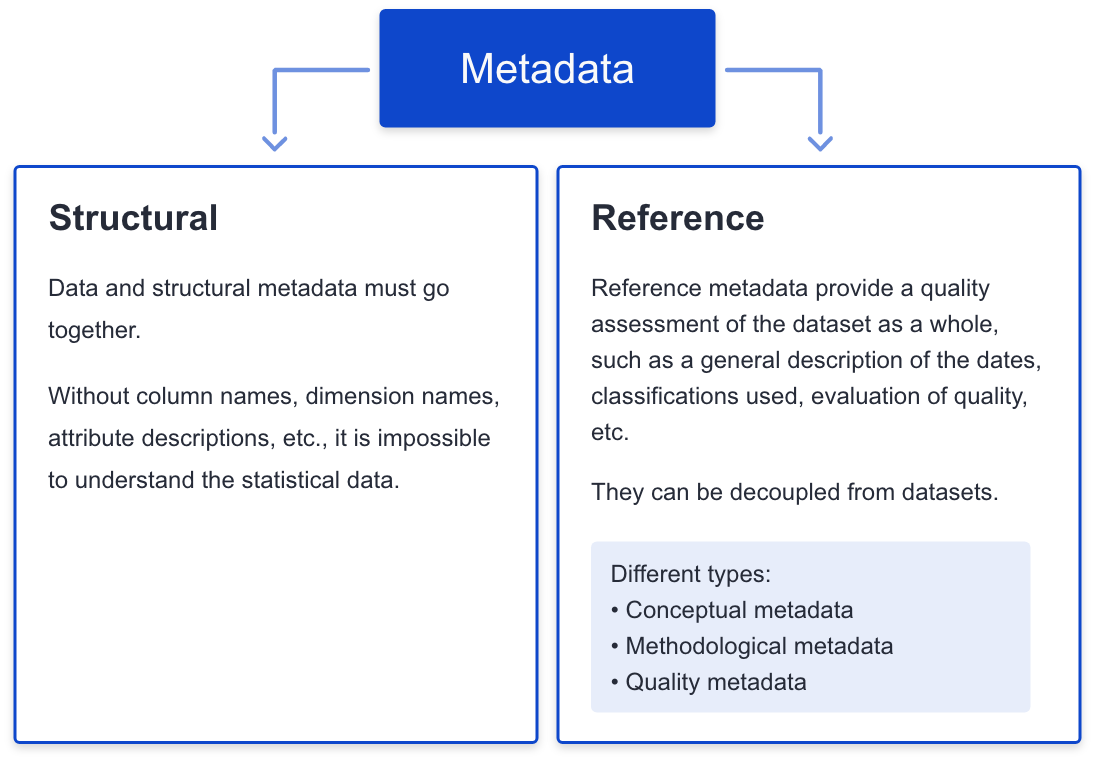Overview
Eurostat publishes a large amount of metadata. These provide the background information needed to fully understand and accurately interpret the European statistics released by Eurostat.
This approach follows principle 15 of the European statistics code of practice, which states that data should always be made available with supporting metadata.
Types of metadata
There are 2 types of statistical metadata: structural metadata and reference metadata.
Structural metadata
Structural metadata are used to identify statistical data such as titles, subtitles, short descriptions, dimension names or variable names.
Structural metadata include
- titles of the variables and dimensions of statistical datasets
- units of measurement such as EUR
- code lists – for example, for territorial coding
- data formats
- potential value ranges
- time dimensions
- value ranges of flags
- classifications used
Data and structural metadata must go together. This can be illustrated by the following example: the number 3 566 833 is meaningless unless its accompanying structural metadata is provided. Namely that this is the total number of women in Bulgaria on 1 January 2021.
Reference metadata
Reference metadata describe statistical concepts and methodologies used for the collection and generation of data. They provide information on data quality and, since they are strongly content-oriented, assist users in interpreting the data. Reference metadata, unlike structural metadata, can be decoupled from the data.
This means that they can be generated, collected, or disseminated separately from the statistics to which they refer. They can also be associated with different levels of data, such as with entire collections, datasets from a given country, or a single data item concerning 1 country and 1 year.

Available metadata by Eurostat
The list below provides links to different kinds of metadata sources made available by Eurostat:
- ESS reference metadata reporting standards: international standards for the exchange and dissemination of reference metadata
- classifications: international statistical classifications and nomenclatures
- code lists: code lists used for the data disseminated by Eurostat
- concepts and definitions: Eurostat's concepts and definitions database (CODED) and other online glossaries on survey statistics
Metadata from EU members
The national statistical institutes of the EU countries also provide metadata for their national statistics. Eurostat maintains a set of links to these national metadata.
